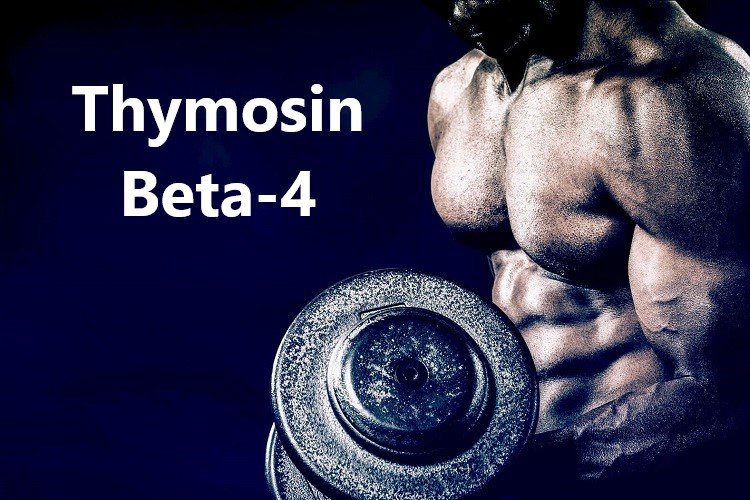Thymosin Beta-4

What is Thymosin Beta-4
Thymosin beta-4: Unveiling the Curtain on a Pivotal Biomolecule
In the vast expanse of the biological universe, myriad molecules play critical roles. Among these, Thymosin beta-4 (TB4) emerges not just as a participant in the body's symphony of life but as a virtuoso of regeneration and healing. Comprehending the magnitude of TB4's role demands an exploration that transcends its molecular structure, delving into its biological functions, implications in health and disease, and the potential it harbors for future therapeutic advancements.
The Molecular Essence of Thymosin Beta-4
Thymosin beta-4 is a small, naturally occurring 43-amino acid peptide first isolated from the thymus gland. Its discovery in the 1960s introduced it as a member of the thymosins, which were initially thought to be involved primarily in immune system development. However, as research progressed, the role of TB4 expanded vastly beyond the confinements of the thymus and immune modulation.
Structurally, the ingenuity of TB4 lies in its capacity to bind actin, a vital cellular cytoskeletal component. This interaction does not merely influence the actin dynamic but orchestrates a concert of cellular events central to movement, structure, and integrity. Moreover, the small size and intrinsic properties of Thymosin beta-4 facilitate its diffusion and its pivotal roles throughout the organism, making it a molecule of systemic significance.
A Conductor of Healing and Regeneration
The biological functions of Thymosin beta-4 are as diverse as they are critical. Among its most celebrated roles is its potent capacity to promote wound healing and tissue regeneration. TB4 achieves this through several mechanisms, including the recruitment of stem cells to injury sites, reduction of inflammatory responses, and promotion of angiogenesis—the formation of new blood vessels. Its regeneration-promoting capabilities have been observed in a plethora of tissues, ranging from the heart to the central nervous system, offering hope for diseases previously deemed untreatable.
Beyond tissue regeneration, TB4 plays an intricate role in modulating the immune system. By acting on immune cells, it helps in creating a balanced immune response that is neither too weak to let infections prevail nor too strong to cause autoimmunity. This immunomodulatory effect, coupled with its ability to promote cell migration and angiogenesis, underscores the peptide's significance in maintaining biological harmony.
Thymosin Beta-4 in Health and Disease
The dysregulation or aberrant expression of TB4 is implicated in various conditions, highlighting its dual potential as a harbinger of disease when unbalanced, and as a therapeutic agent. In the context of heart disease, TB4 has shown promise in cardiac repair post-infarction, offering insights into novel cardiac therapies. Conversely, its overexpression has been linked to tumor progression and metastasis in certain cancers, suggesting a complex role in oncogenesis.
The delicate balance of TB4's activities accentuates the need for nuanced approaches in its therapeutic application. Its potential in treating neurodegenerative diseases, wound healing, heart diseases, and more positions it at the forefront of regenerative medicine. However, understanding the dual nature of its benefits and potential drawbacks is paramount.
Toward a Future of Therapeutic Innovation
As we stand on the precipice of biomedical advancements, Thymosin beta-4 represents a beacon of therapeutic potential. The ongoing research endeavors aim not just to harness its healing prowess but to understand the intricacies of its modulation of life's processes. From designing targeted delivery systems to mitigating potential side effects, the journey of translating TB4 from the bench to bedside is fraught with challenges but buoyed by immense possibilities.
Innovative therapies utilizing TB4 might offer personalized approaches to regenerative medicine, where treatments are tailored not just to the disease but to the intricate biological milieu of the individual. The path forward involves rigorous clinical trials, ethical considerations, and a holistic understanding of the molecule's potential to harm or heal.
Conclusion
Thymosin beta-4 encapsulates the essence of life's complexity—a molecule so small yet profoundly impactful. Its exploration offers a window into the mechanisms of healing, the balance of health and disease, and the potential for groundbreaking therapies. As we continue to unravel the mysteries of TB4, we edge closer to harnessing its full therapeutic potential, heralding a new era of medical innovation where regeneration and healing are not just imagined but achieved. In this quest, Thymosin beta-4 stands not merely as a molecule but as a symbol of hope for the future of medicine.
References:


